Open port 6220 for connecting via the Internet. How to manually open ports in Windows XP
Sometimes when you try to play games online on x-box, Playstation 2 or 3, PSP or any other gaming platform, you may have problems accessing the server. Online games work successfully through your ISP and your computer, and you need to open a suitable port to play online.
Instructions
- 1 Click on the Start button and go to network. On the left you will see Network Tasks. Click on "Show network connections".
- 2 Click right click mouse on Local Area Connection, or right-click on 1394 if you are using wireless connection. Select properties from the dropdown menu. At the very top of the Local Area Connections properties window that opens, you will see General, Authentication and Advanced. Click on the Advanced tab and then select Options under the line Windows Firewall. If your Settings button is not available, then all ports on your computer are automatically open.
- 3 After you've clicked Options under Windows Firewall, click the Advanced tab again and click the Options button to the right of Local Network Connections (or to the right of 1394). Under the Advanced Options tab, click the Add button (at the bottom).
- 4 This will take you to the Service Settings window. In the Service Description field, enter a name, any name, preferably along with what you want to open this port for. For example, PSP port 1234. In the Name or IP address of the computer on your network on which this service is located, enter 127.0.0.1. In the External service port number and Internal service port number fields, enter the port number. The port number you need is in the error messages or should be given to you technical support your his game server. They'll happily give you the port number that should be open, but won't tell you how to do it. Select TCP or UDP, then click OK and now you have your ports open and are ready to play your game online.
Recently I had to manually open ports TCP on Windows 8.1
Usually what is open by default in Windows is enough, but if you are experiencing problems, for example, connecting to the mail server, and usual ways solutions similar problems(clearing cache, changing security settings, disabling firewall) do not help, you may need to open one or another port for network connections.
Wikipedia: The term firewall or its English equivalent firewall is also used to mean “firewall”.
TLS (English Transport Layer Security - transport layer security, like its predecessor SSL (English Secure Socket Layers - secure socket layer) - cryptographic protocols, providing secure data transfer between nodes on the Internet.
SMTP uses TCP port 25 by default. SSL protocol for sending mail uses port 465 by default.
POP3 uses TCP port 110 by default. TLS protocol for receiving mail uses port 995 by default.
In order to open TCP or UDP ports, you must:
1. Click the button and go to Applications Windows 8.1.
2. Find and click the icon Control Panel.
3. Select Windows Firewall.
4. In the left panel Control Panel\All Control Panel Items\Windows Firewall click on Extra options.
5. A window will open.
6. In case of request from UAC Enter the administrator password to confirm the action.
Wikipedia: Control accounts users(English: User Account Control, UAC) - component of operating systems Microsoft Windows, first appeared in Windows Vista. This component prompts you to confirm actions that require administrator rights to help protect against unauthorized use of your computer. The computer administrator can disable User Account Control in the Control Panel.
7. Click on Rules for incoming connections in the left pane of the window Windows Firewall with Advanced Security incoming connections, for example, for port 995 mail server, on either Rules for outgoing connections, if you need to create a rule for outgoing connections, for example, for port 465 of the mail server.

8. Click on Create a rule... in the right panel.
9. After this a window will open Wizard for creating a rule for a new outgoing connection. Select a button For port and press the button Further:
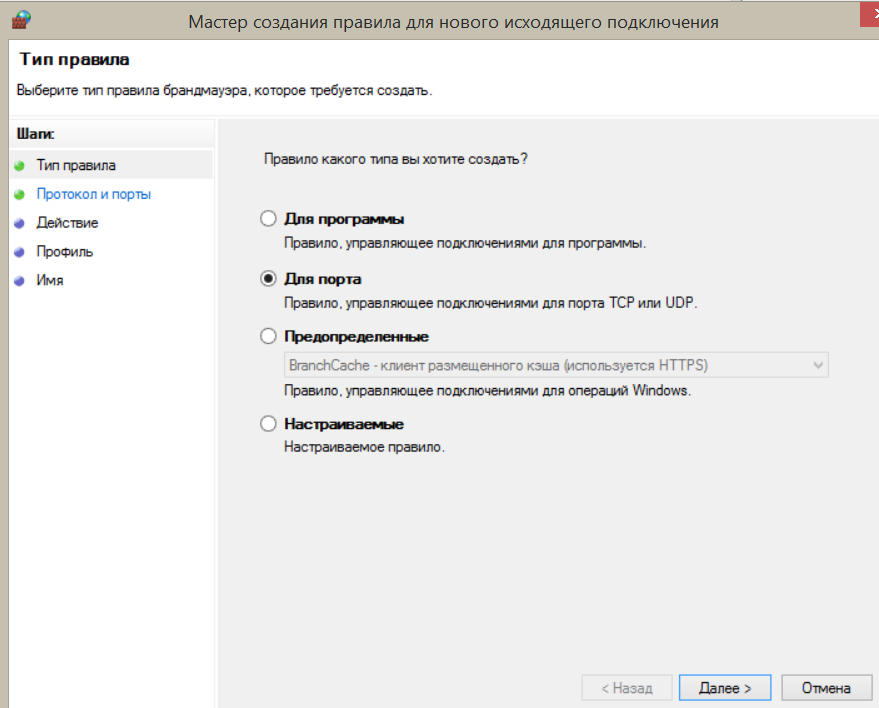
10. Choose TCP protocol And Specific Remote Ports, enter, for example, the required port number 465 and press the button Further:

11. Choose Allow connection and press Further:
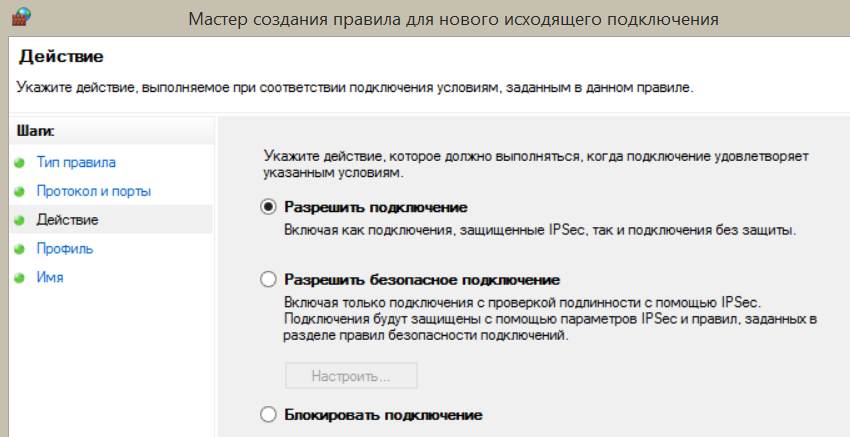
12. Select the profile to which the rule applies:

13. We indicate Name And Description of this rule and press the button Ready.
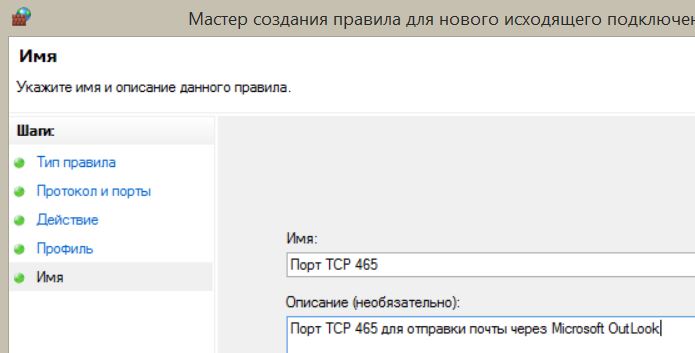
All! The port is open to network connection. If you need to open multiple ports, you must repeat the above steps for each port separately.
If you are an avid gamer or an active user of file-sharing networks such as DC++ and torrent, then you know that for the client program to work, you must additionally open the port. At the same time, everyone knows that this needs to be done on the router, but about the fact that the one you are using operating system There is also a firewall or firewall for some reason they forget. This instruction is devoted to the question of how to open ports on Windows 10.
To do this, you must first go to Control Panel and select the “Windows Firewall” section. 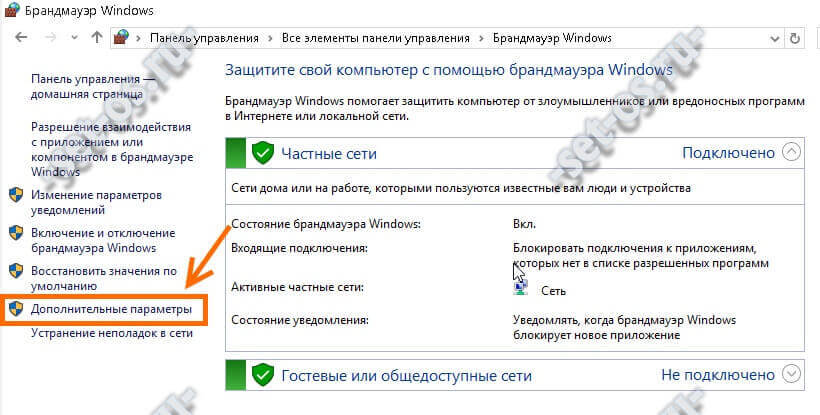
In the menu on the left, select “Advanced options”.
will appear full list rules of the firewall built into Windows 10.
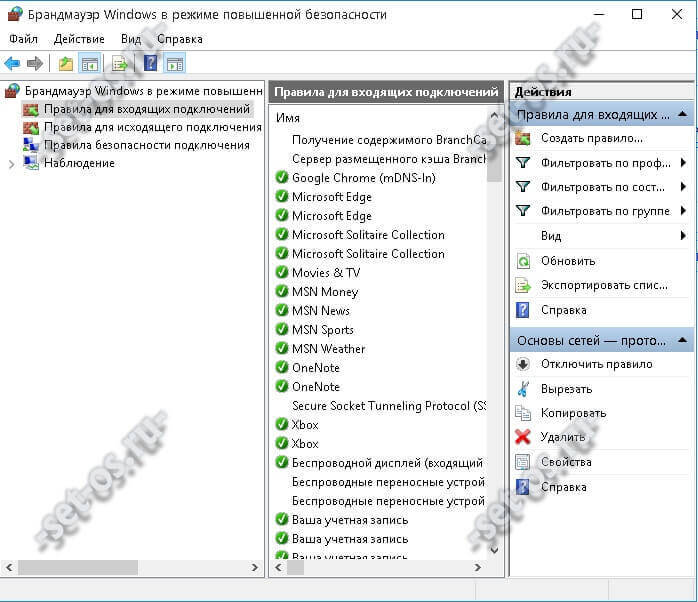
In order to open a port, you need to add a rule for it. This is done using the “Action”>>>”Create Rule” menu section.

This will launch the Rule Creation Wizard for a new incoming connection. The first step is to select the type of rule:
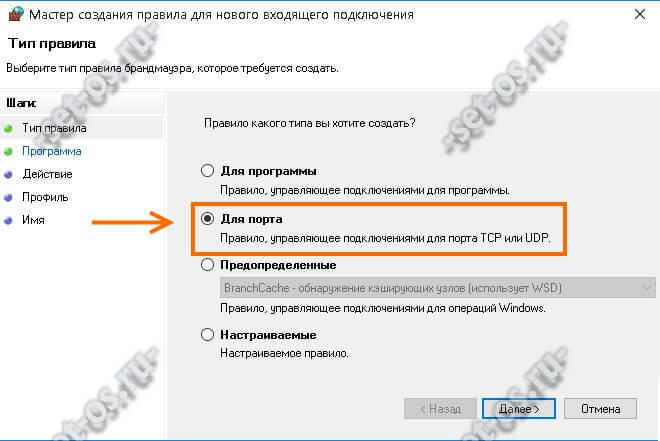
Select the “For port” option. Click on “Next”.
The next step is to select the protocol (TCP or UDP) and specify the port to which the rule will be applied:

Protocol type for different games and applications can use both TCP and UDP, or even both at once. You need to find out about this on their support forum. Let's move on.
The third step is choosing an action. Since we want to open a port on Windows 10, we check the “Allow connection” checkbox.
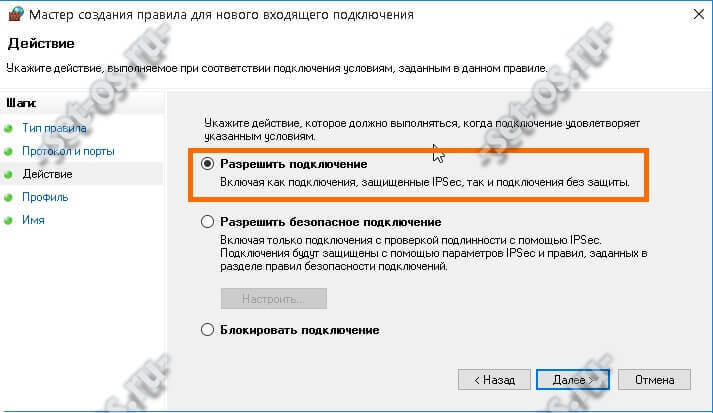
The next point is to select the profile for which the rule will be applied. Let's select all three.
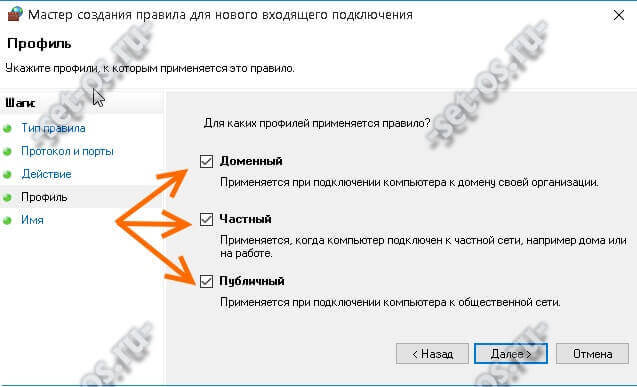
At the last stage, you need to enter the name of the rule. As it, you can use the name of the application or game for which Windows port forwarding is being done.

Click on the “Done” button.
The rule has been created. It will be the first in the table of already existing (read open ports).

Attention! If your system uses a third-party firewall or firewall, then port forwarding will need to be done in their settings. Otherwise, it will still be inaccessible from the outside.
Often in articles on setting up web, ftp or other servers, such a concept as “port forwarding” or “opening ports” is used. To keep your computer safe, firewalls and routers block traffic on all non-essential ports. And if we want to set up, say, an ftp server, we need to open traffic through ports 20 and 21. In routers, such concepts as Forwarding Ports and Virtual Servers are used for this. In articles, I always try to add screenshots of what port forwarding looks like on my router (TP-Link TL-WR1043ND). But this also needs to be done in programs such as Firewall or firewall. Moreover, both in third-party and built-in systems. For some reason, even when turned off, the standard firewall sometimes does not allow programs on closed ports. But since I have DMZ configured on my router for my computer, disabling it in my case is somewhat dangerous. Now I will try to explain how to carry out this operation in a standard Windows firewall, using the example of opening ports for an FTP server: 21 (TCP) for incoming connections and port 20 (TCP) for outgoing ones. Also this instruction needed when setting up an http file server, for example, when you need to open port 80 in both directions.
1) Open “Control Panel” → “System and Security” group → “Windows Firewall”. In the left column, open “Advanced options”:
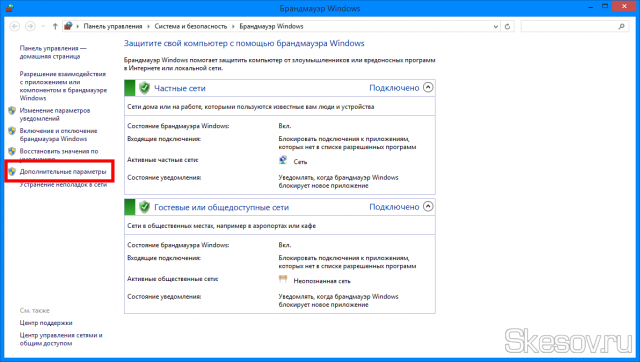
2) Go to the “Rules for incoming connections” tab and click on the “Create rule” button on the right:
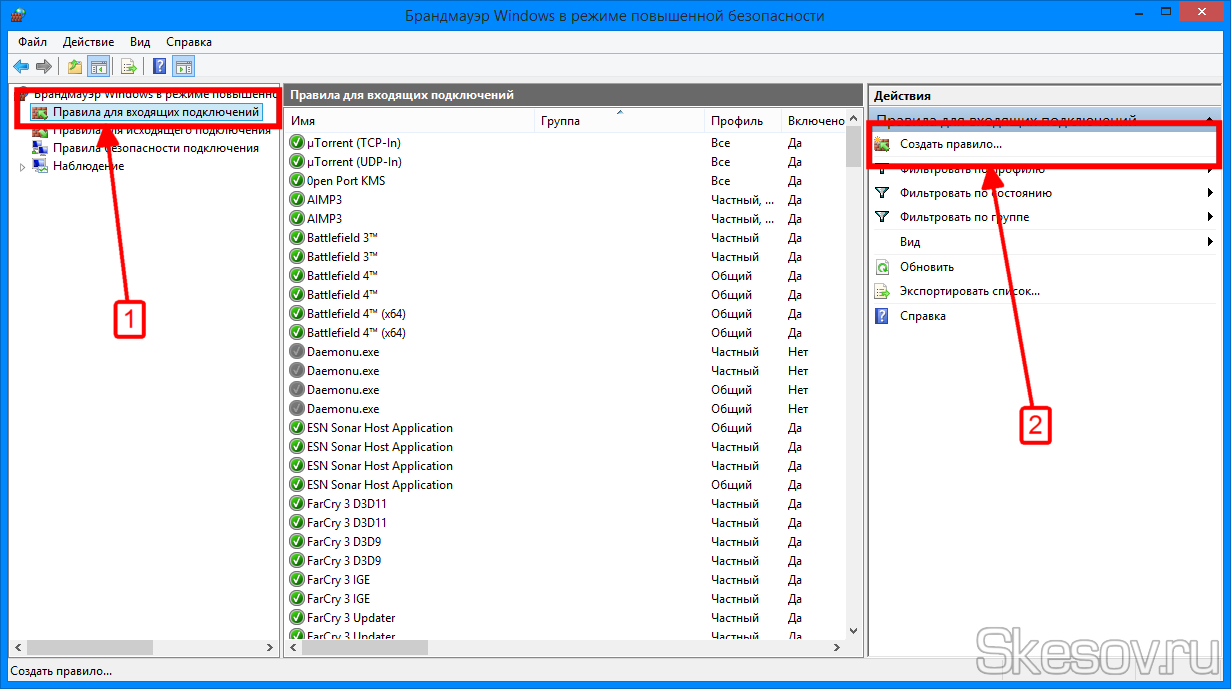
3) Select “For port”, but if we just want to open full access to some ports specific program, you can select “For program” and specify its location.
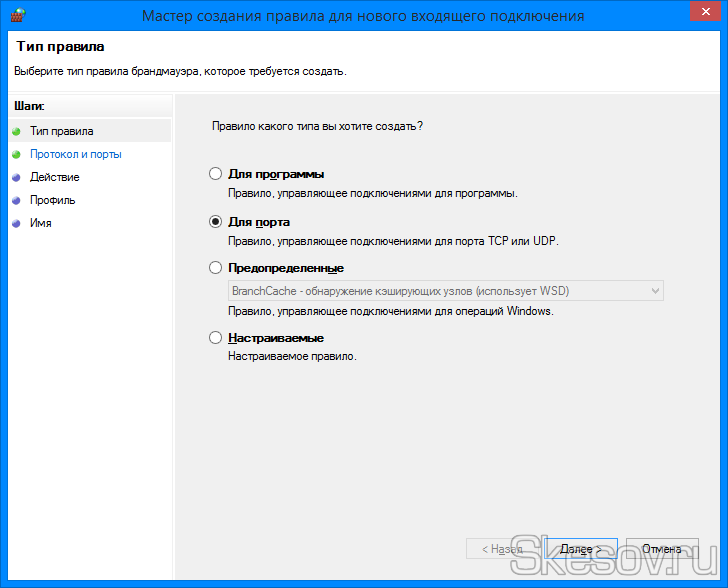
4) Select the protocol and enter desired port. If you select "All local ports", you will simply create a huge hole in the security of your computer.
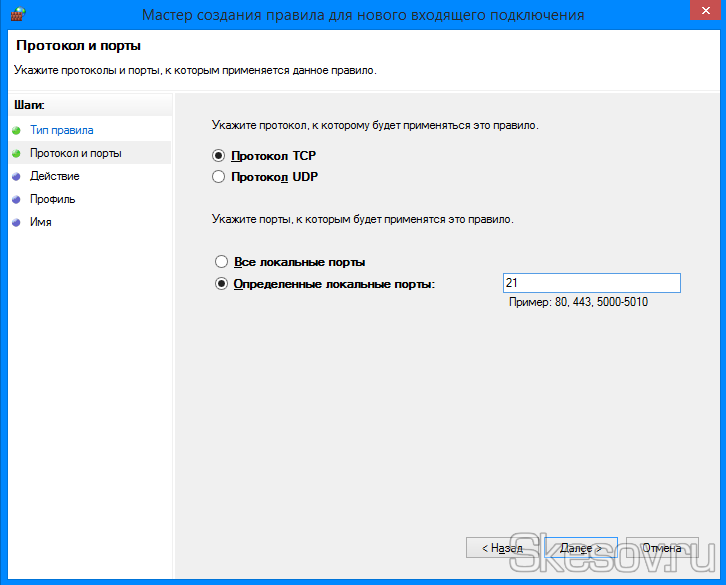

6) ...and profiles local networks, in which this rule will be used.

7) Enter a name and, if desired, a description of the rule. Click “Finish” and the new rule is created.
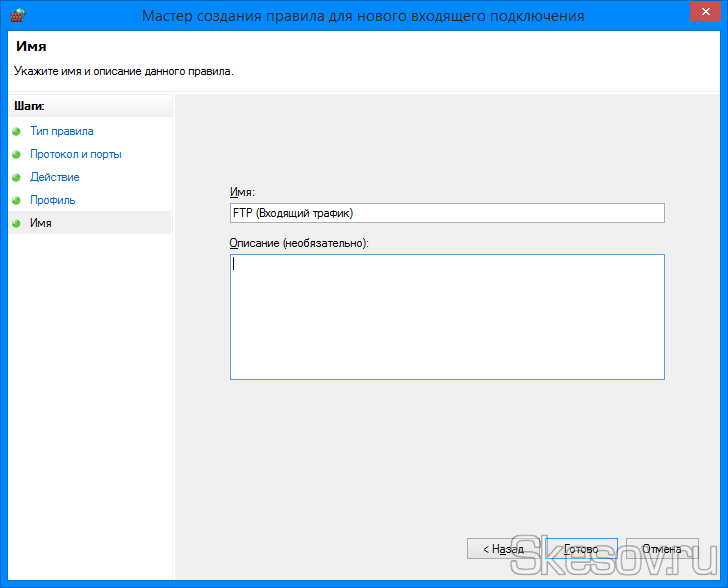
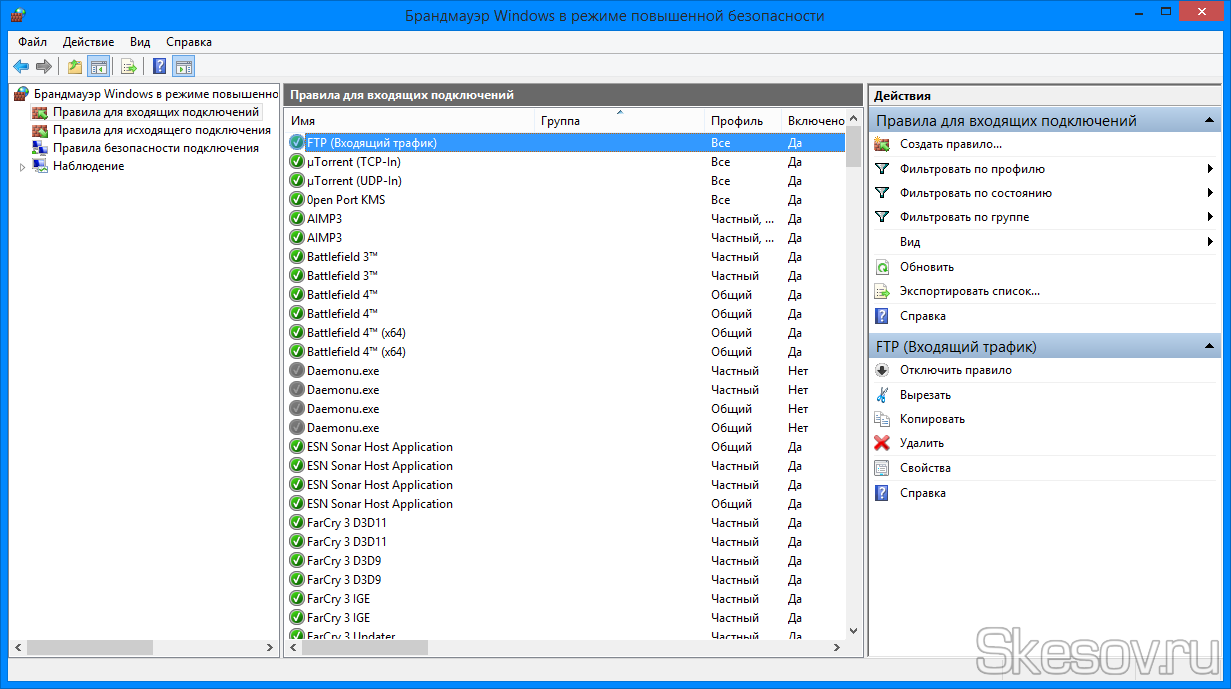
8) Go to the “Rules for outgoing connection” tab and create a rule there using the same principle. Please note that by default a rule is created there that blocks the action, so pay attention to the action page and do not forget to check “Allow connection”.
That's all. I hope you found this article useful, click one of the buttons below to tell your friends about it. Also subscribe to site updates by entering your e-mail in the field on the right.
